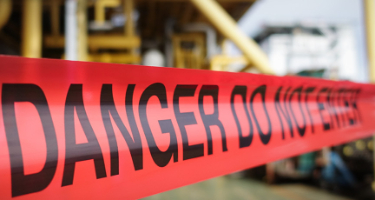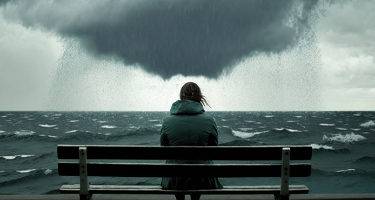Safe Window Coverings: A Guide for Families
By Adam J. Langino, Esq.
Introduction
The U.S. Consumer Product Safety Commission calls window covering cords "one of the most serious hazards in American homes." [i] Pull cords, continuous loop cords, inner cords, or any other accessible cords on window coverings may be dangerous to children. [ii] Between 1990 and 2015, an average of almost two children every day were treated in emergency departments for injuries caused by window blinds. [iii]
This article helps parents and caregivers identify window cord strangulation hazards, provides safety tips, and contains helpful information on what to do if you or someone you love is harmed.
Window Covering Cord Hazards
The window covering industry has known about strangulation hazards since the 1940s. [iv] Experts say that children between the ages of 1 and 4 are at the most significant risk of injury from window blind cords because they have recently gained mobility, are more curious about their surroundings, don't understand the danger, and are unable to free themselves once entangled. [v]
The Voluntary Safety Standard
On December 15, 2018, a new voluntary safety standard went into effect to help ensure manufacturers are producing safer window coverings. However, voluntary safety standards only apply to stock coverings and not custom windows. [iv] The U.S. CPSC is proposing a new rule that requires custom window coverings to meet the same safety standards as stock coverings. [v]
The 2018 voluntary safety standard provides guidance on how an operating cord should be incorporated into a stock window covering. For example, cordless window coverings shall have no operating cords. Short static window coverings must have an operating cable that is 8 inches or shorter in any use position. Finally, window coverings with inaccessible operating cords must have cords that maintain their inaccessibility during safety testing. [vi]
According to the U.S. CPSC, the standard requires stock window coverings to be cordless or have inaccessible cords or short cords (eight inches or less) in any position of the window covering. [vii]
Safety Tips for Parents and Caregivers
For parents and caregivers that still have corded blinds, the U.S. CPSC urges them to replace their corded blinds with cordless blinds, particularly in homes where children live. [viii] If that is not possible, the U.S. CPSC has the following safety recommendations:
Move all cribs, beds, furniture, and toys away from windows and window cords.
Make tasseled pull cords as short as possible.
Keep all window cords well out of the reach of children.
Eliminate any dangling cords.
Permanently anchor continuous-looped bead chains and cords to the floor or wall.
What to do after an Injury
After you or someone you love is seriously injured, contacting a lawyer is the last thing on your mind. However, after an injury involving a dangerous window covering, the evidence must be preserved. In other words, the window, window covering, installation instructions, window covering manual, and window covering warnings should all be maintained to the extent possible.
Further, any purchase information should be preserved as well. For example, a question may arise during your case about why you purchased that specific window covering. Did the sales associate tell you of the hidden dangers? Or did you do research online that led you to believe the coverings were safe and quality? Any information like this should be preserved as well.
A lawyer can help you ensure that all critical evidence is preserved. Therefore, you must contact a lawyer before discarding, repairing, or destroying any evidence, such as the window covering cord or other items listed above.
Who is Responsible?
Manufacturers must sell reasonably safe products and warn of hidden dangers. In a typical window covering injury lawsuit, the window covering manufacturer and the seller are defendants. In many jurisdictions, both have a duty to exercise ordinary care to prevent consumers from harm.
What types of Damages may be Recovered?
In a typical lawsuit against a manufacturer or seller of a dangerous window covering, several types of damages may be recovered. For example, the cost of past and future medical care for your child is often brought in these types of lawsuits. Further, non-economic damages may be recovered as well. Most jurisdictions allow the child to recover for their past and future pain, suffering, and loss of enjoyment of life. Some jurisdictions also allow the child's parents to recover emotional damages when they suffer a permanent, significant injury. Ultimately, every jurisdiction is different; however, the above are the types of recoverable damages available in many jurisdictions.
Conclusion
I hope you find the above helpful. If the unthinkable happens and you or someone you love is injured by a defective window covering, please feel free to reach out. Over my career, I have gained valuable experience handling child injury claims. I am licensed to practice law in Florida and North Carolina and co-counsel claims in other states. If you would like to learn more about me or my practice, click here. If you want to request a free consultation, click here. As always, stay safe and stay well.
[i] “CPSC to Consumers: The Safest Window Coverings When Young Children Are Present Are Cordless.” U.S. Consumer Product Safety Commission, 5 Oct. 2021, https://www.cpsc.gov/Newsroom/News-Releases/2022/CPSC-to-Consumers-The-Safest-Window-Coverings-When-Young-Children-Are-Present-Are-Cordless?fbclid=IwAR2vvzjKgvW-qcNS1ChpYgbn0_eRyqnQ0FKqNUdhiyQoxHuIruMG8o_PpNI.
[ii] Id.
[iii] Haelle, Tara. “Window Blind Cords Still Pose a Deadly Risk to Children.” NPR, NPR, 11 Dec. 2017, https://www.npr.org/sections/health-shots/2017/12/11/569463027/window-blind-cords-still-pose-a-deadly-risk-to-children.
[iv] Welch, Ashley. “Window Blind Cords Can Be Deadly for Children, Experts Warn.” CBS News, CBS Interactive, 11 Dec. 2017, https://www.cbsnews.com/news/ban-window-blinds-with-cords-to-prevent-kids-deaths-injuries-study/.
[v] Id.
[vI] The Federal Register: Safety Standard for Operating Cords on Custom Window Coverings. 17 Jan. 2022, https://www.federalregister.gov/documents/2022/01/07/2021-27896/safety-standard-for-operating-cords-on-custom-window-coverings. [vii] Id. [viii] Moldovan, Allen. “US CPSC Publishes Safety Standard for Operating Cords on Custom Window Coverings.” SGS, 29 Apr. 2022, https://www.sgs.com/en/news/2022/04/safeguards-05422-us-cpsc-publishes-safety-standard-for-operating-cords-on-custom-window-coverings. [ix] “Updated Voluntary Window Covering Safety Standard Takes Effect: GO Cordless.” U.S. Consumer Product Safety Commission, 18 Dec. 2018, https://www.cpsc.gov/Newsroom/News-Releases/2019/Updated-Voluntary-Window-Covering-Safety-Standard-Takes-Effect-Go-Cordless.
[x] Id.
































